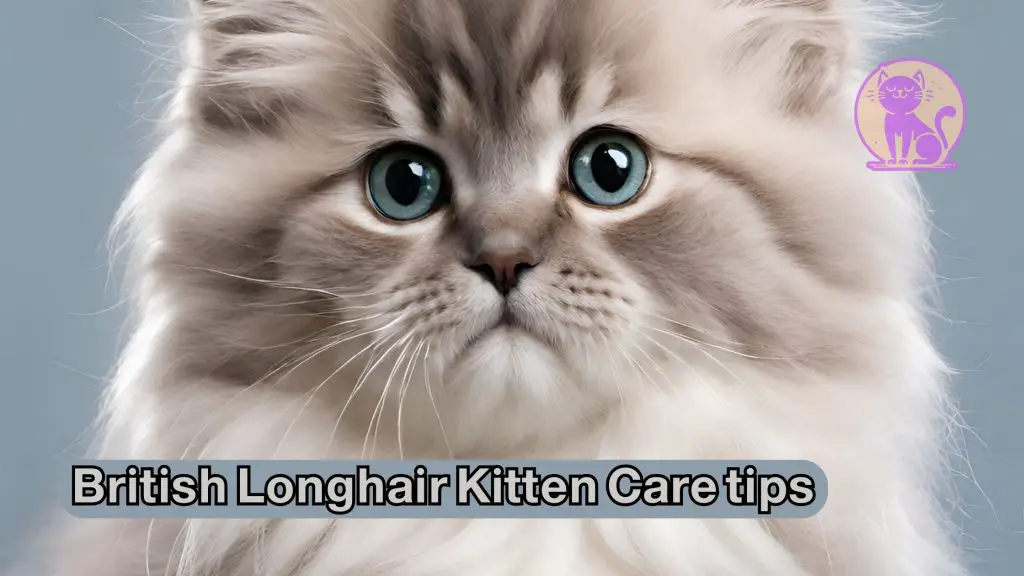Welcome to the comprehensive guide on British Longhair Kitten Care. Embracing the journey of nurturing these magnificent felines begins with an understanding of the distinct Longhair Cat Characteristics that set them apart. In this article, we’ll unfold the myriad of care strategies tailored to uphold the well-being of the British Longhair Cat. Whether you’re a seasoned cat owner or a new enthusiast of this breed, our insights will ensure that your fluffy companion thrives in its new forever home.
Understanding Your British Longhair Kitten’s Needs
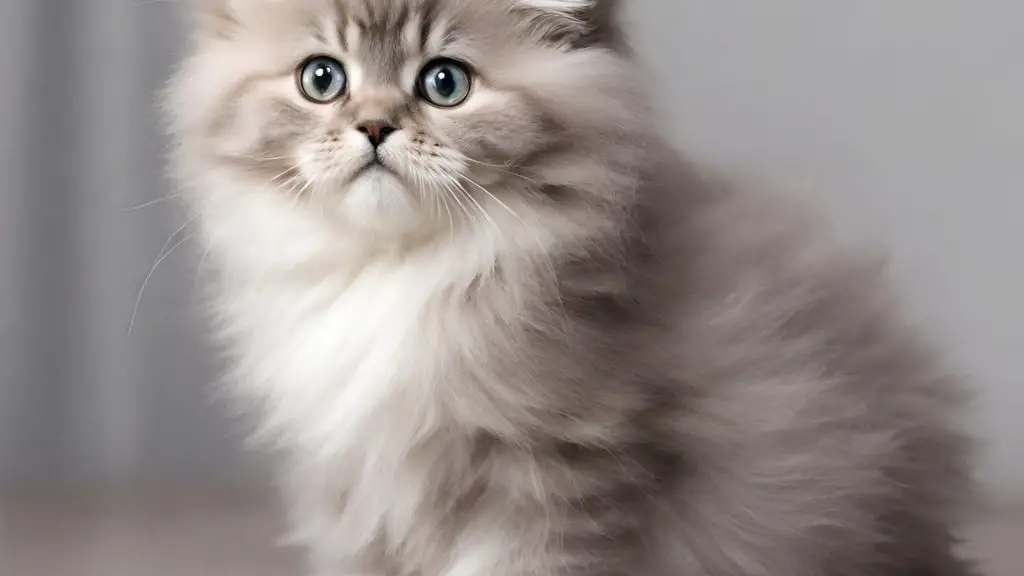
Welcoming a British Longhair kitten into your home comes with the joyous responsibility of understanding and providing for their unique needs. This plush-coated feline requires a delicate balance of nutrition, a secure living space, and an understanding of their distinctive behaviors to thrive. Below, we’ll explore the essential components to ensuring your furry companion grows up healthy, happy, and well-adjusted in their new environment.
Essential Nutritional Requirements
Proper nutrition is the cornerstone of a British Longhair kitten’s growth and well-being. These elegant felines benefit from a diet that is rich in protein to support their long, flowing coats and overall health. When searching for food, make sure to choose options that meet the essential nutritional requirements of a developing kitten, like high-quality meats and balanced vitamins and minerals. To tailor to these needs, here’s a guide to the essential dietary components:
| Nutrient | Benefits | Recommended Sources |
|---|---|---|
| Protein | Builds muscle and supports coat health | Chicken, Turkey, Fish |
| Fat | Provides energy and aids in nutrient absorption | Fish oil, Flaxseed |
| Vitamins | Various body functions including immune response | Supplemented cat food or vet-approved vitamins |
| Minerals | Strong bones and teeth formation | Calcium in formulated kitten food |
| Taurine | Essential for heart and eye health | Animal-based proteins |
Creating a Safe Home Environment
Investing time to create a safe home environment for your British Longhair kitten is just as crucial as their diet. Begin by cat-proofing your living space; secure dangling wires, remove toxic plants, and ensure there are no small objects that could be ingested. Incorporate various elements that encourage natural behaviors while keeping them safe:
- A sturdy scratching post to satisfy their scratching instincts
- Cat trees and shelves for safe climbing and perching
- Cozy nooks for them to retreat to when they crave a quiet moment
Remember, a stress-free home promotes a happy and healthy kitten.
Longhair Cat Characteristics and Behavior
British Longhairs are known for their calm and composed demeanor, but they also harbor a playful side that emerges with trusted companions. Their long, opulent fur is a standout characteristic that requires regular grooming. To respect their behavior, provide interactive play sessions that cater to their hunting instincts, and establish a grooming routine that helps prevent matting.
Understanding the intricate dance of proper care, safety, and behavior will lead you to find the most rewarding experiences with your British Longhair kitten. It’s these thoughtful preparations and attentions to detail that turn a house into a ‘forever home’ for these regal felines.
Choosing the Right British Longhair Kitten
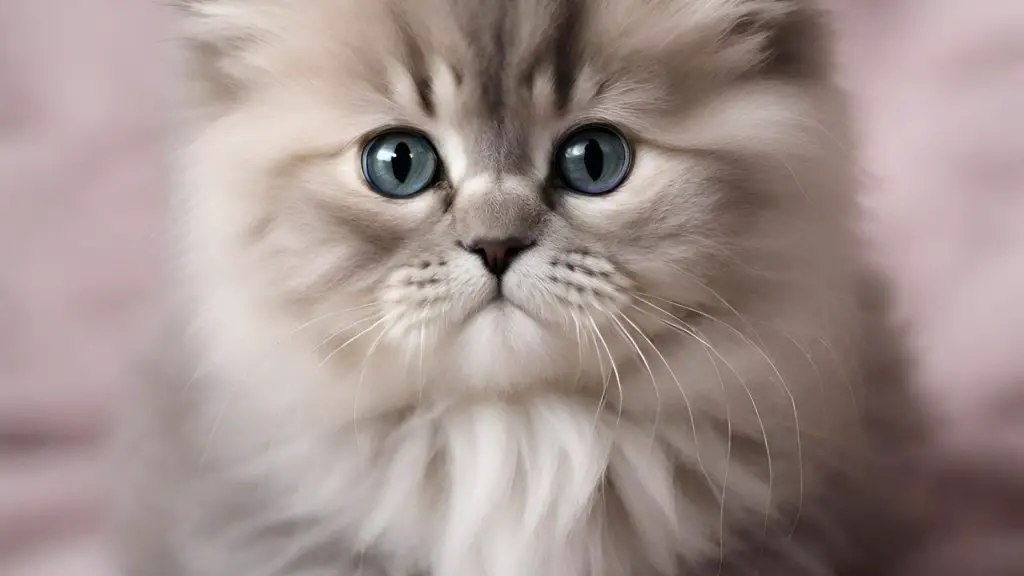
Embarking on the journey to select a British Longhair kitten is thrilling, yet it requires careful consideration and informed decisions. It’s vital to ensure that your future feline companion comes from a place that not only nurtures their early days but is also deeply committed to their holistic health and genetic lineage. The following insights are designed to assist prospective pet owners in making the best choice when adding a British Longhair kitten to their home.
Finding Reputable British Longhair Breeders
Locating a trustworthy British Longhair breeder is the cornerstone of finding a healthy and well-adjusted kitten. Reputable breeders are recognized for their adherence to breed standards, focus on health screenings, and a transparent approach to potential owners. They are also usually affiliated with cat fancier clubs and associations, adding an extra layer of credibility. When reaching out to breeders, it’s advised to inquire about health guarantees, lineage documentation, and the opportunity to visit the breeding premises.
Evaluating Kitten Health and Personality
When you meet British Longhair kittens, assessing their health and temperament is a crucial step. Here are a few tips to keep in mind:
- Observe the kitten’s activity level and mobility to ensure they are lively and alert.
- Check for clear eyes, clean ears, and a shiny coat, which are indicators of good health.
- Ask for a health record that demonstrates the kitten has received necessary vaccinations and screenings.
- Interaction with the kitten can reveal a lot about their personality; look for one that is curious and sociable, yet also meshes well with your lifestyle.
A well-adjusted kitten should show confidence and a willingness to engage with new people and surroundings. When evaluating kitten health, trust your instincts and pay attention to how the kitten interacts with their littermates and if they display any signs of distress or discomfort.
| Health Sign | Observation | Concerning Signs |
|---|---|---|
| Eyes | Clear and bright | Discharge, redness, or dullness |
| Ears | Clean with no odor | Excessive wax build-up or scratching |
| Coat | Shiny and smooth | Matting, bald spots, or dandruff |
| Energy Level | Playful and active | Lethargy or reluctance to move |
Remember, when you’re looking to bring a British Longhair kitten into your life, the process should be an exciting and positive experience. Taking the time to find British Longhair breeders with a reputation for excellence, and carefully evaluating kitten health and personality, will pave the way for a happy, healthy, and fulfilling relationship with your new feline friend.
Feeding Your British Longhair Kitten
Nourishing your British Longhair Kitten with a balanced diet is imperative to foster robust Longhair Kitten Health. In this section, we’ll highlight the Best Foods for Kittens that will contribute to their growth and wellbeing. Understanding dietary requirements and appropriate feeding routines will enable you to support your kitten’s vibrant lifestyle and development.
Best Foods for Longhair Kitten Health
For your British Longhair Kitten’s diet, a combination of quality dry and wet foods is often recommended. Dry food is beneficial for dental health, while wet food provides hydration and can be more palatable. Be sure to select formulas that are specifically designed for kittens as they have different nutritional profiles compared to adult cat food, including increased amounts of protein, fat, and essential vitamins.
| Type of Food | Benefits | Examples |
|---|---|---|
| Dry Kibble | Contributes to dental health, convenient for free-feeding | Royal Canin Kitten, Blue Buffalo Healthy Growth |
| Wet Food | Provides hydration, typically more enticing | Hill’s Science Diet Kitten, Purina Pro Plan Focus Kitten |
| Fresh/Cooked Meat | High in protein, simulates natural diet | Cooked chicken or turkey (unseasoned, boneless) |
How Often and How Much to Feed
Determining how often and how much to feed your kitten depends on age, size, and activity level. Kittens have small stomachs and require several small meals throughout the day.
- Under 6 months: 3 to 4 meals a day
- 6-12 months: 2 to 3 meals a day
- Consult the feeding guide on your kitten’s food packaging as a starting point
- Adjust portion sizes accordingly if your kitten appears underweight or overweight
It’s crucial to consult with your veterinarian to establish a feeding schedule and amount that’s tailored to your British Longhair Kitten‘s individual needs, ensuring optimal growth and health.
Grooming Tips for Your British Longhair Kitten
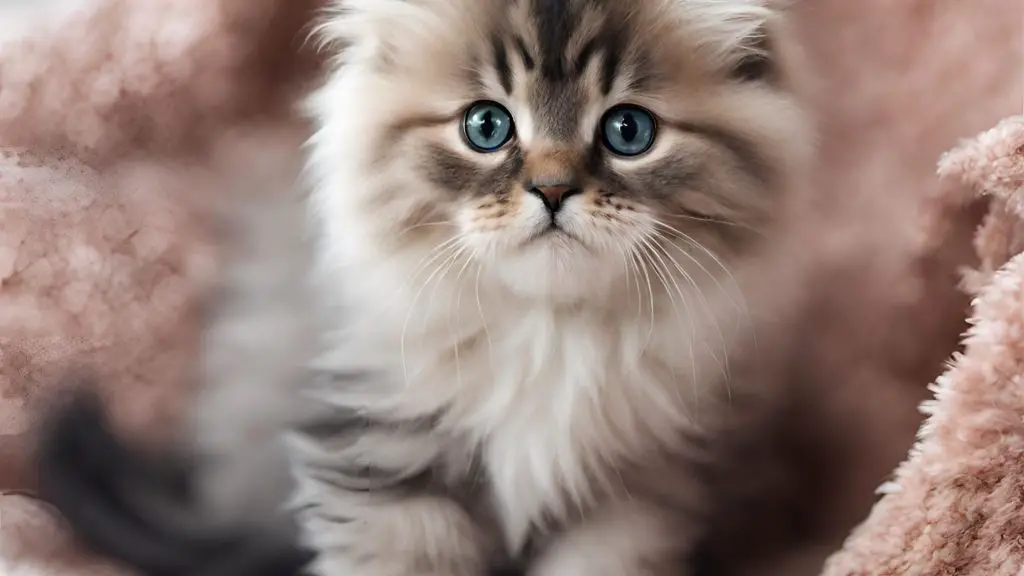
When considering longhair cats for sale, it’s vital to factor in the grooming needs of breeds like the British Longhair cat. These elegant felines command a presence with their beautiful, voluminous coats. However, this also means they require consistent grooming to maintain their lustrous appearance and prevent matting. A regular grooming routine not only keeps your cat looking their best but also serves as a special bonding experience between you and your pet.
Caring for your kitten involves more than just regular brushing. Here’s a breakdown of the grooming essentials you’ll need to help your British Longhair cat stay in top condition:
- Hairbrushes and Combs: Using the right tools can make all the difference. Choose a high-quality brush designed for long-haired breeds. Pin brushes and wide-toothed combs work effectively to detangle and smooth their coat.
- Bathing: Although cats are efficient self-cleaners, the dense fur of a British Longhair kitten may require occasional baths to keep their coat clean and reduce shedding.
- Eye Care: Regularly monitor and gently clean your kitten’s eyes to prevent any buildup of dirt or discharge that can cause irritation.
- Ear Care: Keeping the ears clean from excess wax and debris helps in staving off infections and maintaining overall health.
- Nail Trimming: Consistent nail trims prevent overgrowth and protect your furniture from scratches. It’s also essential for your kitten’s wellbeing.
Grooming sessions present the dual benefit of upholding a shimmering, tangle-free coat and nurturing a closer rapport with your British Longhair cat. Use grooming as an opportunity to inspect for signs of skin issues or parasites, ensuring proactive health care.
| Grooming Task | Frequency | Tools Needed | Tips |
|---|---|---|---|
| Brushing | Daily to Weekly | Pin brush, Metal comb | Start at the head and work toward the tail, gently untangling snarls. |
| Bathing | Monthly | Cat-specific shampoo, Towels | Use lukewarm water and ensure thorough rinsing to prevent soap residue. |
| Eye and Ear Care | Weekly | Cotton balls, Physiological Water | Be gentle and never insert anything into the ear canal. |
| Nail Trimming | Every 2-3 Weeks | Nail clippers, Styptic powder | Clip only the tip of the nail to avoid the quick and offer a treat afterward as positive reinforcement. |
Remember, Grooming British Longhair Cat kittens can be an enjoyable and rewarding experience that strengthens your bond and ensures their coat and skin remain healthy. With routine care, your kitten’s luxurious coat will be the envy of all, illustrating the pinnacle of feline beauty and care.
Training and Socializing Your Kitten
Whether you’re a new or seasoned cat owner, understanding British Longhair Kitten Care principles is paramount to nurturing a well-behaved and social feline. Effective training coupled with consistent socialization strategies lays the foundation for a kitten’s fulfilled life in its new home. Mastering Basic Training Essentials not only promotes good behavior but also strengthens the bond between you and your British Longhair.
Basic Training Essentials
It all begins with routine; kittens thrive on it. Start with litter box training to set a clear precedent for bathroom habits. Then introduce simple obedience commands like ‘come’ and ‘stay’. Reward-based training is a favored approach, reinforcing positive behavior with treats or affection. Remember to exercise patience – kittens are naturally playful and may require repeated sessions to grasp new concepts.
- Litter Box Training: Show your kitten the box as soon as it arrives home.
- Obedience Training: Use treats and gentle voice commands to teach basic commands.
- Reward System: Positive reinforcement encourages your kitten to repeat desired behaviors.
Socialization Techniques for Longhair Cats
Socialization is equally critical, molding your kitten’s temperament and reducing the risk of fear or aggression towards new experiences. Expose your British Longhair to different people, environments, other animals, and various handling experiences, like brushing and nail clipping. This Socialization Techniques process should be gradual and positive, ensuring your kitten feels secure every step of the way.
- Introduce to Family Members: Allow each person to gently interact with the kitten.
- Encounter Other Animals: Under supervision, let your kitten meet other household pets.
- Explore New Environments: Take your kitten to different areas of your home and outside if safe.
With dedication to these training and socialization foundations, your British Longhair kitten is sure to develop into a sociable and loving companion for years to come.
Healthcare for British Longhair Kittens
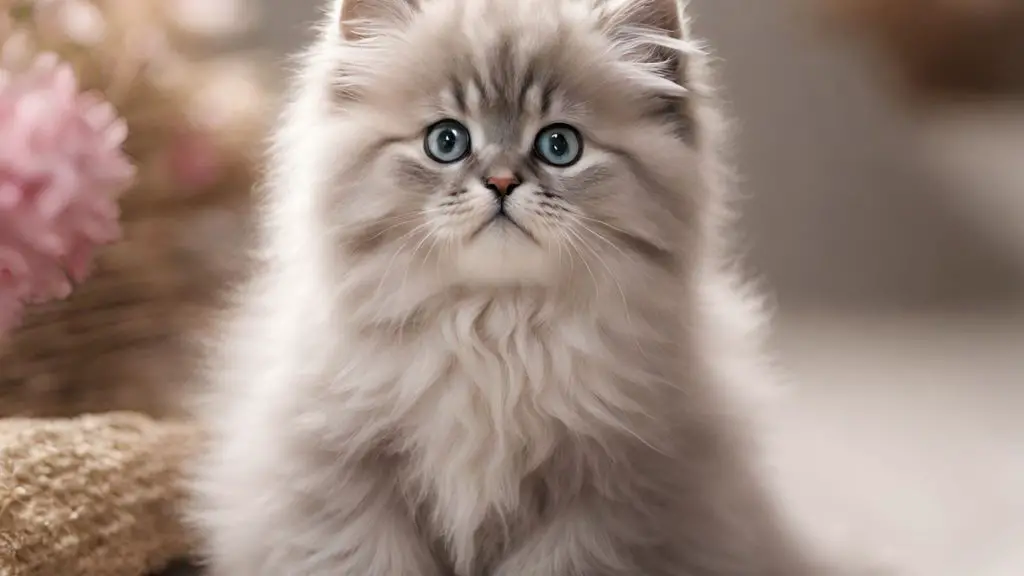
The journey towards responsible pet ownership begins with understanding the healthcare essentials for British Longhair Kitten Health. From the moment you consider Longhair Kitten Adoption, your furry companion’s well-being becomes a priority. To help you navigate the initial steps, we offer a guide on the proactive health measures every British Longhair kitten requires.
- Vaccinations: Essential for preventing common infectious diseases, vaccinations should be administered according to your veterinarian’s schedule, starting as early as 6 to 8 weeks of age.
- Parasite Control: Kittens are prone to parasites such as fleas, ticks, and worms. Ensure a routine protocol for deworming and external parasite prevention is in place.
- Spaying/Neutering: Spaying or neutering not only prevents unwanted litters but also contributes to a reduction in certain health risks and behavioral issues.
- Regular Veterinary Visits: Yearly check-ups with a vet are crucial for ongoing health, including dental care, weight management, and early detection of any potential issues.
Maintaining a British Longhair kitten’s health requires vigilance and commitment. By adhering to a structured healthcare routine, you ensure your kitten has the utmost chance for a healthy, vibrant life. Remember, proactive and preventative care is the bedrock of a long and joyful companionship with your British Longhair kitten.
Play and Exercise: Keeping Your British Longhair Kitten Active
Introducing fun and fitness into your home can make a world of difference in the life of your British Longhair kitten. By creating a space where they can climb, explore, and play, you’re catering to their natural curiosities and promoting a healthy lifestyle. If you’ve been searching for “British Longhair Kittens Near Me,” understanding the need for an active environment is just as crucial as finding the perfect feline friend. Let’s dive into how to establish this stimulating space and discuss the toys that will keep your kitten on their paws!
Creating an Engaging Play Area
An Engaging Play Area is essential for the physical and emotional well-being of your British Longhair kitten. The designated space doesn’t need to be large; even a corner of a room can be transformed into a kitten-friendly haven. Start with structures like cat trees or wall shelves, which encourage climbing and jumping. Scratching posts and pads not only keep your kitten entertained but also safeguard your furniture. Ensure the area is safe from hazardous objects and has soft landing spots for those ambitious leaps.
Interactive Toys for Mental Stimulation
When it comes to Interactive Toys, there’s a plethora to choose from that can challenge and appease your kitten’s clever mind. Toys like feather wands, laser pointers, and motorized mice create dynamic games that sharpen hunting skills and provide much-needed exercise. Puzzle feeders and treat-dispensing toys work wonders for mental stimulation, engaging your kitten’s senses and rewarding their problem-solving prowess.
| Toy Type | Benefits | Activity Level |
|---|---|---|
| Cat Tree | Encourages climbing, provides vantage points | Moderate to high |
| Feather Wand | Simulates hunting, engages in interactive play | High |
| Puzzle Feeder | Encourages problem-solving, slows down eating | Low to moderate |
| Laser Pointer | Stimulates chasing, keeps kitty on the move | High |
| Scratching Post | Provides a safe outlet for scratching, good for nail health | Low |
In conclusion, whether it’s climbing up their cat tree or chasing the elusive red dot of a laser pointer, providing these options for your British Longhair kitten ensures a combination of fun and fitness. Remember, variety is the spice of life for these felines, so mix it up with different Interactive Toys to keep them constantly engaged and looking forward to playtime in their Engaging Play Area.
Understanding British Longhair Cat Care Over the Long Term
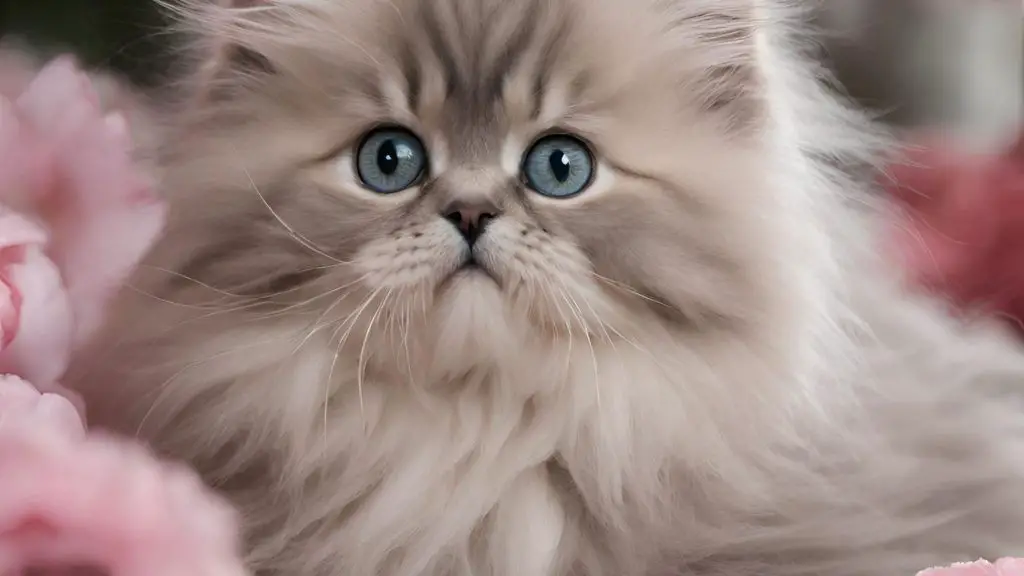
Caring for a British Longhair cat demands an understanding of the Longhair Cat Characteristics that make them such a distinctive breed. As they transition from playful kittens to dignified adults, British Longhair Cat Care requires a consistent approach to meet their evolving needs. The lush coat that characterizes these elegant felines is just the start. Below we’ll explore the crucial elements to ensure they thrive throughout their lives.
Nutrition is paramount as your British Longhair cat matures. It’s essential to maintain a balanced diet tailored to their life stage, considering any changes in metabolism. Regular grooming is equally important. Beyond that, a close eye on their health will detect issues before they become problems. Let’s take a deeper dive into these critical components:
- Nutritional Needs: Keep up with high-quality foods that support skin, coat, and overall health.
- Grooming Rituals: Frequent brushing minimizes tangles and mats, and reduces hairballs.
- Healthcare Visits: Regular check-ups with the vet will catch any health concerns early.
| Age | Dietary Focus | Grooming Frequency | Health Check Interval |
|---|---|---|---|
| Kitten (0-1 Year) | High protein, omega fatty acids for growth | Twice a week | Every 6 months |
| Adult (1-7 Years) | Stable diet, adjusted for energy levels | Once to twice a week | Annually |
| Senior (7+ Years) | Lower calorie, supplements as needed | Twice to three times a week | Every 6 months |
Ensuring your British Longhair enjoys a full and healthy life goes beyond the basics of feeding and grooming. Establishing an environment that stimulates their curiosity and physicality is essential. A mix of interactive play, coupled with tranquil spaces for rest, aligns with their natural longhair characteristics—providing them with the balance they instinctively seek.
Ultimately, long-term care for your British Longhair cat hinges on understanding their individual needs, making routine adjustments, and forging a deep bond through daily interactions and care. By doing so, you will not only provide them with a life of comfort and security, but you’ll also ensure years of companionship and love.
Common Health Issues and How to Prevent Them
Maintaining the health of your British Longhair kitten requires not only love and attention but also an informed understanding of potential breed-specific health issues. Proactive prevention strategies, coupled with the observance of your kitten’s daily behaviors, can be crucial in early detection and effective management of health concerns. Below, we delve into routine measures every British Longhair cat owner should take to safeguard their feline’s well-being.
Regular Veterinary Checkups
Recognizing the pivotal role of veterinary checkups is a cornerstone of responsible pet ownership. These check-ins provide an opportunity for professionals to assess your British Longhair kitten’s overall health and to catch any early signs of medical issues. Routine appointments are essential components of a comprehensive health regimen, ensuring that vaccines are up to date and that growth and development are proceeding as they should.
Recognizing Signs of Illness Early
An observant owner can be the first line of defense when it comes to recognizing signs of illness in their British Longhair kitten. Subtle changes in behavior or physical appearance, such as changes in appetite, activity level, or litter box habits, can be early indicators that something is amiss. Alertness to these early signs, combined with a prompt veterinary consultation, can often lead to more effective treatment outcomes.
| Sign | Normal | Potential Illness Indicator |
|---|---|---|
| Appetite | Consistent meal consumption | Decreased or absent appetite |
| Activity Level | Playful and energetic | Lethargy or decreased energy |
| Litter Box Habits | Regular, without strain | Infrequency, struggle, or avoidance |
| Grooming | Self-grooming regularly | Decrease in grooming or unkempt fur |
| Weight | Steady growth or maintenance | Unexplained weight loss or gain |
| Vocalization | Typical meowing or quiet | Increased vocalization or howling |
By integrating regular veterinary checkups and honing your ability for recognizing signs of illness early in your British Longhair kitten, you contribute greatly to their health and happiness. Be vigilant, be informed, and always err on the side of caution to give your kitten the best chance at a long and thriving life.
Longhair Kitten Adoption: Things to Consider
Adopting a British Longhair kitten is an incredibly rewarding experience that brings a new level of joy and companionship to your life. However, before embarking on this journey, it is vital to consider a few important factors to ensure a smooth transition for both the kitten and yourself.
- Understanding the Commitment: British Longhair kittens require a long-term commitment. Consider whether you’re ready for the responsibilities of pet ownership, including daily care, regular vet visits, and the potential for a 15-year or longer relationship.
- Preparing Your Home: A safe, welcoming environment is crucial. Secure potentially dangerous areas and remove hazardous items. Ensure you have all the necessary supplies, such as a litter box, scratching posts, and comfortable resting areas.
- The Benefits of Shelter Adoption: Choosing to adopt from a shelter or rescue group can be a life-saving decision. Often, these kittens have already received important health checks and vaccinations. Plus, you’re providing a loving home to a cat in need.
- Choosing the Right Fit: When you visit shelters or reach out to British Longhair breeders, look for a kitten whose personality complements your lifestyle. Spend time interacting to gauge if it’s a good match.
Remember, Longhair Kitten Adoption is not just about finding a kitten, it’s about finding a new family member. Make sure to do your research and consider contacting local British Longhair Breeders or pet adoption agencies to understand all the conditions and care requirements for these magnificent felines.
Ultimately, whether through a breeder or an adoption agency, bringing home a British Longhair kitten should be a joyous and conscientious decision. Cherish the experience of building a bond that will enrich your life for years to come.
British Longhair Kitten Price and Budgeting for Expenses
Embarking on the journey of British Longhair kitten ownership is undeniably exciting, but it’s also accompanied by a host of financial considerations. Understanding the initial investment and the continuous care costs that come with owning one of these fluffy companions is essential. This prepares prospective owners to responsibly manage the financial commitment required for their kitten’s well-being. Let’s delve into the cost factors that are inherent in British Longhair kitten ownership, providing you with clarity on budgeting for kitten expenses.
Initial Costs of Kitten Ownership
When welcoming a British Longhair kitten into your life, the initial price is the first expense that prospective owners anticipate. The British Longhair Kitten price can vary widely, often reflecting the breeder’s reputation, the kitten’s lineage, and geographic location. Initial costs also include essential supplies such as a litter box, carrier, scratching post, and toys. Additionally, early veterinary care for vaccinations and routine health checks are crucial investments for your kitten’s vibrant start in life. By preparing for these expenses, you’re ensuring that your feline starts off on the right paw.
Ongoing Care Expenses
The expenses don’t halt at the initial purchase; they ebb and flow throughout the cat’s life. Budgeting for kitten expenses is pivotal, encompassing everything from premium-quality food to suit their dietary needs, to regular grooming sessions that their luxurious coat demands. Veterinary expenses for annual check-ups, preventive medications, and potential emergencies should also be included in your budget. Investing in pet insurance may also be worth considering to mitigate unexpected costs. By planning for these ongoing expenses, owners can ensure their British Longhair kitten thrives in a loving home that’s prepared for both predictable and unforeseen costs.
FAQ
Q: What are some essential care tips for British Longhair kittens?
A: British Longhair kittens require regular grooming to maintain their luxurious coats, proper nutrition for healthy growth, socialization to ensure they become well-adjusted adults, and regular health check-ups to keep them in prime condition.
Q: What should I feed my British Longhair kitten?
A: Your kitten needs a balanced diet rich in proteins, vitamins, and minerals. It’s best to feed them high-quality kitten food recommended by your vet, and ensure fresh water is always available.
Q: How can I find reputable British Longhair breeders?
A: Look for breeders who are registered with cat fancier associations, have a transparent health screening process, and who are willing to provide you with a visit to see the kittens and their living conditions. References from other cat owners and reviews can also be helpful.
Q: How do I create a safe home environment for my kitten?
A: Cat-proof your home by removing toxic plants, securing loose wires, and ensuring small objects that can be swallowed are out of reach. Create a comfortable resting area and provide scratch posts and toys for stimulation.
Q: How often should I groom my British Longhair kitten?
A: British Longhair kittens should be groomed several times a week to prevent matting and tangles, with daily brushing being ideal. Regular grooming also helps forge a stronger bond between you and your kitten.
Q: What are the common longhair cat characteristics?
A: Longhair cats typically have a gentle and calm demeanor. They are known for their luxurious coats, which require constant care. They may also be less active compared to shorthair breeds, and they can enjoy a good cuddle.
Q: Where can I adopt a longhair kitten?
A: Check local animal shelters, rescue groups, or contact specific breed rescues that might have British Longhair kittens available for adoption. Additionally, reputable breeders may have retired adult cats or older kittens for adoption.
Q: What is the typical price range for a British Longhair kitten?
A: The price for a British Longhair kitten can vary depending on factors such as pedigree, breeder reputation, and location, but generally, they can range from several hundred to a few thousand dollars.
Q: How can I socialize my British Longhair kitten properly?
A: Expose your kitten to different people, sights, sounds, and experiences in a safe and controlled way. Encourage gentle handling and make sure to introduce new situations gradually to avoid overwhelming them.
Q: What are the essentials for the health care of British Longhair kittens?
A: Your kitten will need vaccinations, regular parasite prevention treatments, and annual veterinary check-ups. Monitoring their health and early detection of any health issues are crucial for their long-term well-being.
Q: How can I tell if my British Longhair kitten is healthy?
A: A healthy kitten is active, has clear eyes and ears, a shiny coat, and exhibits regular eating and bathroom habits. Regular vet visits are essential to confirm and maintain their health status.
Q: What should I consider before adopting a British Longhair kitten?
A: Consider the time, financial commitment, and lifestyle adjustments required for a long-term commitment to your new pet. Ensure that you are ready to provide a loving and stable environment for your kitten to grow up in.

